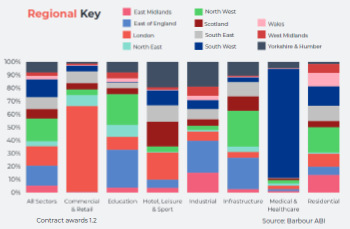Nature improvement area
Contents[hide] |
[edit] Introduction
Nature Improvement Areas (NIA, Previously known as Ecological Restoration
Zones) are areas of land that have been identified for the opportunity they offer to restore nature at a landscape scale in conjunction with other land uses. They were established in 2012 after the publication of the Natural Environment White Paper, with the intention of creating ecological networks that help improve the health of the natural environment, reduce flood risk, support food production and increase accessibility to nature.
They are defined by the National Planning Policy Framework (NPPF) as 'Inter-connected networks of wildlife habitats intended to re-establish thriving wildlife populations and help species respond to the challenges of climate change.'
The NPPF specifies that local plans should consider which developments may be appropriate within Nature Improvement Areas.
[edit] Locations
Following publication of the Natural Environment White Paper, the government launched a competition to identify 12 potential Nature Improvement Areas and provide £7.5 million in funding. A panel assessed the entrants and in February 2012, the 12 areas were announced:
- Birmingham and the Black Country.
- Dearne Valley.
- Humberland Levels.
- Marlborough Downs.
- Meres and Mosses of the Marches.
- Morecambe Bay Limestones and Wetlands.
- Nene Valley.
- Northern Devon.
- South Downs Way Ahead.
- The Dark Peak.
- The Greater Thames Marshes.
- Wild Purbeck.
These areas are shown on a map available from the Natural England website.
[edit] Management
The areas are funded by the Department for Environment, Food & Rural Affairs (DEFRA) and Natural England and are run by partnerships of local authorities, landowners, local communities, the private sector and conservation organisations.
[edit] Monitoring and progress
Each of the 12 Nature Improvement Areas are monitored to assess the success of the varying approaches taken in each area. The monitoring focuses on four themes:
- Biodiversity.
- Ecosystem services.
- Social and economic benefits and contributions to wellbeing.
- Partnership Working.
The first phase of monitoring was undertaken in 2012 and phase two will be completed by November 2015.
An annual report is produced following each of the 3 years of funding:
- Year 1 (2012 to 2013).
- Year 2 (2013 to 2014).
- Year 3 (2014 to 2015).
Natural England produces information on the progress of each area.
[edit] Related articles on Designing Buildings Wiki.
- Areas of Outstanding Natural Beauty.
- Biodiversity.
- Biodiversity offsetting.
- Designated sites.
- Environmental net gain.
- How nature can be used to improve wellbeing.
- Making Local Nature Recovery Strategies deliver.
- National nature reserves.
- National parks.
- National Planning Policy Framework.
- National Trust.
- Natural England.
- Natural Environment White Paper.
- Planning permission.
- Protected species.
- Sustainable development toolkit.
- Wellbeing.
[edit] External references
Featured articles and news
Spring Statement 2025 with reactions from industry
Confirming previously announced funding, and welfare changes amid adjusted growth forecast.
Scottish Government responds to Grenfell report
As fund for unsafe cladding assessments is launched.
CLC and BSR process map for HRB approvals
One of the initial outputs of their weekly BSR meetings.
Architects Academy at an insulation manufacturing facility
Programme of technical engagement for aspiring designers.
Building Safety Levy technical consultation response
Details of the planned levy now due in 2026.
Great British Energy install solar on school and NHS sites
200 schools and 200 NHS sites to get solar systems, as first project of the newly formed government initiative.
600 million for 60,000 more skilled construction workers
Announced by Treasury ahead of the Spring Statement.
The restoration of the novelist’s birthplace in Eastwood.
Life Critical Fire Safety External Wall System LCFS EWS
Breaking down what is meant by this now often used term.
PAC report on the Remediation of Dangerous Cladding
Recommendations on workforce, transparency, support, insurance, funding, fraud and mismanagement.
New towns, expanded settlements and housing delivery
Modular inquiry asks if new towns and expanded settlements are an effective means of delivering housing.
Building Engineering Business Survey Q1 2025
Survey shows growth remains flat as skill shortages and volatile pricing persist.
Construction contract awards remain buoyant
Infrastructure up but residential struggles.
Warm Homes Plan and existing energy bill support policies
Breaking down what existing policies are and what they do.
A dynamic brand built for impact stitched into BSRIA’s building fabric.





















